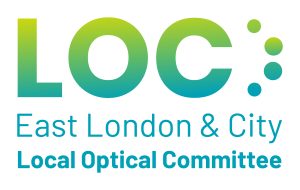DIABETES AND THE EYE
Diabetes currently affects 1 in 50 of the UK population, and is a complex condition which increases the risks of many other medical conditions as well as having its own complications. One of the main areas of the body which diabetes can cause problems with is the eye – diabetic eye damage is still probably the largest single cause of vision loss in people of working age.
There are two main types of diabetes, but the eye problems are the same for both. The main part of the eye which can be damaged by diabetes is the retina (the back of the eye – equivalent to the film in a camera), but other parts can be affected as well. We will go through some of the basics here.
Blurred Vision in Newly Diagnosed Diabetics
Many people suffer from blurred vision when they are newly diagnosed and coming under control. This usually only lasts for a few weeks and is caused by swelling at the front of the eye (due to the sugar levels in the blood). It clears as the control is established, and it is not normally a good idea to have an eye test in the first couple of months after being diagnosed.
Fluctuating Blur
For the same reason as above, if your blood sugar levels are fluctuating (and particularly if they are running at high levels) then your vision will become blurred, and the strength of glasses needed to correct this will vary. Again, usually getting the control sorted will get rid of this problem, but some diabetics do need more frequent changes of glasses than would be normal for their age.
Another temporary disturbance of vision can be hypoglycaemia (very low blood sugar levels) – this can cause double vision and other blurring, due to the part of the brain which controls vision not getting enough sugar. This quickly clears with eating something and bringing the blood sugar level back to normal!
Cataract
Diabetics are more likely to develop cataract at a faster rate than normal, and this is most likely if the blood sugar control is poor. There is a special type of cataract which can develop almost overnight in some (mainly younger) diabetics, but this is extremely rare. If you do develop cataract, then your doctor or optician can organise referring you into the eye clinic once this is causing significant problems – the treatment for cataract with a diabetic is the same as for a non-diabetic.
Glaucoma
Another eye condition which is more common with diabetics is glaucoma. This is nerve damage at the back of the eye which causes loss of vision out to the sides, then tunnel vision and eventually total blindness. This is one reason why diabetics should be seen regularly by an optician, as glaucoma can be treated if caught early.
Diabetic Retinopathy
The most worrying changes which diabetes can cause to the eye are on the retina (back of the eye). These mainly develop after several years of having diabetes (although some people can have had diabetes for ten years before they are diagnosed), and is worse in people with poorly controlled blood sugar levels. Another problem is that high blood pressure makes the condition worse as well, and smoking can also damage
The retina has a very rich supply of blood vessels, as it needs a lot of feeding to keep working. One thing which tends to happen with diabetes is that the walls of these blood vessels become thinner, and they can leak out blood or parts of the blood into the nerves around them. High blood sugar levels cause the thinning of the walls, and high blood pressure forces the blood out through this weakness – so a poorly controlled diabetic smoker with uncontrolled high blood pressure can be in real trouble.
The first signs of diabetic retinopathy are not linked with any loss of vision, and will probably clear on their own with improved blood pressure and/or blood sugar level control. These are small haemorrhages (bleeds) from some of the capillaries, and as long as there are not too many this is not a major problem. However, if more extensive bleeding happens then vision may be affected (especially if they are in the more sensitive parts of the retina). This can need treatment by laser surgery to stop it from progressing to blindness.
The laser is used to burn parts of the retina – either directly where the blood is leaking (known as “focal” laser) or in areas towards the edges of the retina (known as “panretinal” laser). Prompt laser treatment can halve the risk of a diabetic going on to blindness. If very much laser treatment has to be applied, it can lead to loss of vision to the sides and possibly cause problems with driving.
If the diabetic retinopathy progresses, then the eye sometimes attempts to bypass the damaged blood vessels by making new ones in the same area. The problem here is that these new blood vessels are very weak and prone to bursting – this can then lead to blood starting to fill the middle part of the eye (the vitreous humour, or jelly inside the eye). As this clots, it can start to pull the retina away from the rest of the eye, which would cause blindness if not treated. If this happens, then a major surgical operation is required to remove the blood clot, repair the retinal detachment and seal up the leaking blood vessels.
The good news for diabetic patients is that there is a Diabetic Retinopathy Screening service in place – this is a yearly test where photographs of the backs of the eyes are taken and analysed. If there are signs of diabetic retinopathy which needs treatment, then the hospital eye clinic call the person in to be examined further. All diabetics in the county should be under this system – if you are diabetic and haven’t been seen then please check with your GP surgery!
Why Should I Have My Eyes Tested Regularly?
If you are diabetic then a yearly eye examination by an optometrist (optician) is recommended. You should have the annual DRS test (see above) as well, but the two examinations are looking for different problems. The DRS test is very good at checking for diabetic retinopathy, but doesn’t really test for cataract and cannot test for glaucoma. Also they cannot test whether you need a change in glasses. The ideal combination is that both types of testing are carried out once a year (or more regularly in some cases).
Some useful websites:
http://www.diabetes.co.uk/diabetes-complications/diabetic-retinopathy.html
http://www.diabetes.co.uk/diabetes-complications/eye-problems.html






